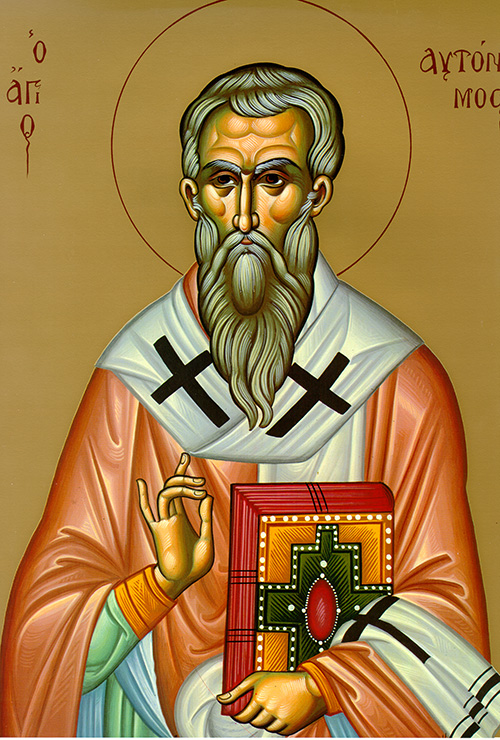

The holy bishop martyr Autonomous fled Italy during the Diocletian persecution and settled in Asian Bithynia at a place called Soreoi. There, he converted many to Christianity, and built a church for them dedicated to the holy Archangel Michael. Autonomous lived in the home of a devout Christian, Cornelius, whom he first ordained as a presbyter, and then consecrated to the episcopacy. Not far from Soreoi there was a place called Limnae, inhabited entirely by pagans. St. Autonomous went to this place and soon enlightened many with the Gospel of Christ. This embittered the pagans, and one day they rushed into the Church of the Holy Archangel Michael in Soreoi during the divine service and slew Autonomous in the sanctuary, and killed many other Christians in the church.
The Church calls us to celebrate your holy memory with faith, O splendid and glorious Autonomous, who pleased the Trinity. She rejoices and praises you. Pray for us to God, the only Lover of Mankind.
O most wise one, you worthily offered the Divine Mysteries, You became an acceptable offering, O God-blessed one. You drank from the cup of Christ, O most glorious one, O light of the whole world, pray unceasingly for all of us.
Galatians 2: 6-10
Those who were regarded as important, however (and it makes no difference to me how prominent they were – God plays no favorites), made me add nothing.
On the contrary, recognizing that I had been entrusted with the gospel for the uncircumcised, just as Peter was for the circumcised (for he who worked through Peter as his apostle among the Jews had been at work in me for the Gentiles), and recognizing, too, the favor bestowed on me, those who were the acknowledged pillars, James, Cephas, and John, gave Barnabas and me the handclasp of fellowship, signifying that we should go to the Gentiles as they to the Jews. The only stipulation was that we should be mindful of the poor – the one thing that I was making every effort to do.
Mark 5: 22-24, 35-43; 6:1
At that time one of the officials of the synagogue, a man named Jairus, came near. Seeing Jesus, the official fell at Jesus’ feet and made this earnest appeal: “My little daughter is critically ill. Please come and lay your hands on her so that she may get well and live.” The two went off together and a large crowd followed, pushing against Jesus.
And then people from the official’s house arrived saying, “Your daughter is dead. Why bother the Teacher further?” Jesus disregarded the report that had been brought and said to the official: “Fear is useless. What is needed is trust.” He would not permit anyone to follow him except Peter, James, and James’ brother John. As they approached the house of the synagogue leader, Jesus was struck by the noise of the people wailing and crying loudly on all sides. He entered and said to them: “Why do you make this din with your wailing? The child is not dead. She is asleep.” At this they began to ridicule him. Then he put them all out.
Jesus took the child’s father and mother and his own companions and entered the room where the child lay. Taking her hand he said to her, “Talitha, koum,” which means, “Little girl, get up.” The girl, a child of twelve, stood up immediately and began to walk around. At this the family’s astonishment knew no bounds. Jesus enjoined them strictly not to let anyone know about it, and told them to give her something to eat.
He departed from there and returned to his own part of the country followed by his disciples.
Icon courtesy of Jack Figel, Eastern Christian Publications – ecpubs.com
Thursday, September 11 –